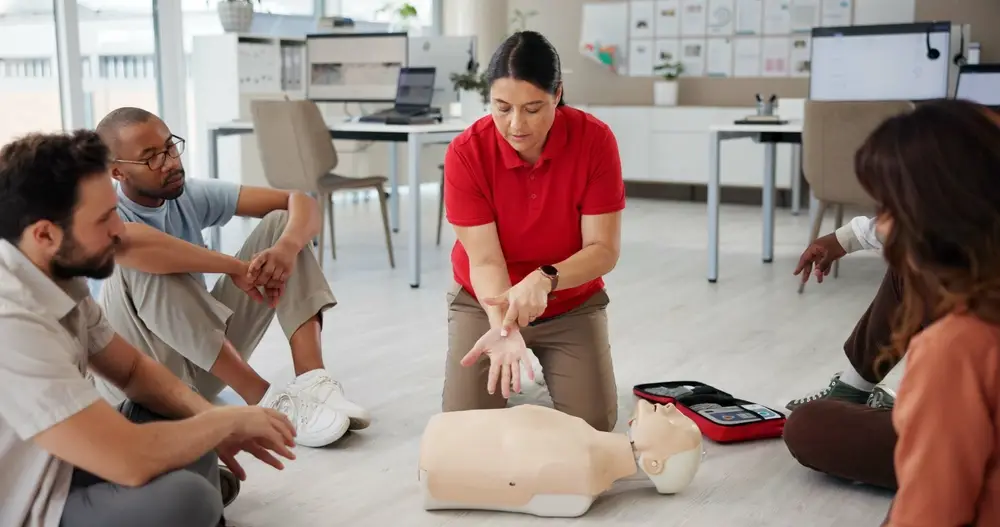Making a safe and supportive workplace is essential in any industry, especially in this day and age. Employees and visitors alike need to feel comfortable, at ease, and protected at all times when in their workplace. They need support systems to lean on when they need them and robust security measures to prevent any dangers from occurring. Without this, a business can create a negative workspace where productivity levels are low because staff feel uninspired. This leads to a high turnover as people don’t enjoy your work environment and find somewhere better that suits them more. They find places that make them feel safe, secure and protected at all times, leaving your business to suffer and plummet away from success.
Safety and support aren’t only for retaining staff and keeping them happy, either. As a business, you have to adhere to and comply with specific regulations to operate properly and legally. These regulations constantly change over time because they adapt to new ways of working, making your business adapt to them as well. From hybrid offices to advanced technology integration, workplace safety has evolved into a responsibility for your business with many different layers. Employers are expected not only to meet regulatory standards but also to anticipate the changing needs of their teams. Due to this, gaining an understanding of current safety trends is key to ensuring that your business is compliant and puts employee well-being first.
A Holistic Approach to Wellbeing
At one point in time, workplace safety was only focused on preventing physical injuries and protecting staff from physical harm that could occur. However, it is so much more than this today because of the new hazards and challenges employees face in the modern world. Your business needs to think outside of the hard hats and warning signs and embrace a holistic approach. This approach should include physical health, mental health, stress management, and work-life balance. These aspects are all vital parts of safety and are what keep your staff happy and safe. You see, stress and burnout can have as much of an impact on productivity and risk as physical hazards do, which is why more organizations are investing in mental health programs, wellness initiatives, and open conversations around employee support.
Technology as a Safety Tool
Technology has advanced dramatically over the years and has completely changed the way in which businesses operate. Integrating tech into the workplace has helped many industries streamline their operations, boost productivity levels, and make processes more efficient. However, technology in itself presents another threat- one that can be more difficult to deal with. Cyber-attacks and sensitive information and data being obtained by criminals can occur, which makes it hard to protect staff’s personal data and your company’s information or even money. Luckily, technology can be used to prevent these risks and other threats. Many businesses aren’t aware of the positive power of technology in increasing safety and support in the workplace. Not only can your business benefit from encrypted and robust online security for your data, money, and other sensitive information, but you can also use technology to increase your staff’s comfort and satisfaction with their jobs.
You can get wearable devices that can track physical strain, monitor fatigue, and even detect exposure to hazardous environments. There are also smart sensors available for your workplace, which can alert managers to unsafe conditions, while AI-driven platforms help predict risks before they occur. This means that technology has now become a proactive safeguard that allows employers to create safer and more responsive workplaces.
Training for a Modern Workforce
Another aspect of the modern workforce that is constantly changing is workplace training. This is a very useful tool for your business to invest in to create a supportive work environment because it offers your staff opportunities to learn, grow, and achieve their professional goals. Workplace training also helps your company improve safety for everyone in the workplace. This is because a lot of training workshops can be based on safety in the workplace, educating staff on updated safety standards and ensuring everyone can adhere to legislation.
Workplace training is always changing to keep up with the needs of a modern and diverse workforce. Making use of interactive e-learning platforms and virtual reality simulations can make these sessions more engaging, allowing members of staff to remember information and learn more from every session. Plus, it replacesthe boring static manuals and outdated presentations of the past. These toolsensure employees are better prepared for real-world scenarios, and with ongoing and adaptive training,your business can easily maintain safety standards.
Flexibility and Hybrid Work
The rise of remote and hybrid work has reshaped how organizations think about safety. Safety isn’t only restricted to a physical workspace anymore, and employers don’t just have to think about risks in a traditional office or workspace. Instead, more and more businesses need to factor in the well-being of employees when they’re in the office and when they are at home. This includes ensuring that remote workers have ergonomic setups, clear boundaries to prevent burnout, and access to resources that keep them connected to the wider team. By extending safety policies beyond the physical workspace, companies demonstrate a commitment to protecting employees wherever they are.
Emergency Preparedness and Support Services
A lot of the time, unexpected events can occur and catch businesses off guard. Whether a sudden natural disaster occurs or someone experiences a health emergency, these unexpected events highlight the importance of a business being prepared for absolutely anything. It is essential for your company to build resilience into your operations by developing clear emergency protocols and ensuring support systems are in place. This can mean regular drills, communication strategies, and partnerships with professional support providers. In some industries, organizations even contract external medic services to ensure staff are looked after quickly and professionally when the unexpected occurs. Such measures reinforce trust and provide peace of mind to employees.
Looking Ahead
Workplace safety will continue to evolve alongside wider societal changes. As technology advances and employees’ expectations of their work environments grow, employers will need to remain adaptable and forward-thinking. A workplace that invests in safety is not only fulfilling its legal duties but also creating a culture of care, trust, and resilience that benefits everyone.
Also Read: SOA OS23: Shaping the Future of Digital Architecture and Compliance



